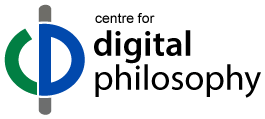Considerações sobre a teoria do cérebro triuno e sua relevância para uma filosofia da mente e das emoções
DOI:
https://doi.org/10.15448/1984-6746.2015.2.21861Palavras-chave:
Evolução. Filosofia da biologia. Filosofia das emoções. Filosofia da mente. Neurofilosofia. Teoria do cérebro triuno.Resumo
Este artigo estabelece algumas relações fundamentais entre evolução, a teoria do cérebro triuno e a relevância que esta pode ter para a fundamentação empírica de uma filosofia da mente e das emoções. Inicialmente, será especialmente considerada a posição do filósofo Ronald de Sousa no seu já clássico artigo “The Mind’s Bermuda Triangle: Philosophy of Emotions and Empirical Science”, parte do Oxford Handbook of Philosophy of Emotions. A segunda seção discute a validade da teoria do “cérebro triuno” como abordagem neuroetológica evolutiva, delineando sua divisão tripartite do cérebro e analisando críticas e elogios às suas ideias, além de considerações de neurocientistas importantes no campo do estudo das emoções como Ledoux e Panksepp sobre tal tema. Na terceira seção, trato de um trabalho de Pollen e Hofmann que nos serve de apresentação de novas abordagens contemporâneas para a compreensão da evolução do cérebro. Como conclusão delineio um marco de trabalho na forma de uma agenda de pesquisa para as relações entre biologia evolutiva, neurociência e o estudo filosófico das emoções.
Downloads
Referências
BUTLER A. B.; HODOS, W. Comparative Vertebrate Neuroanatomy. Evolution and adaptation. 2. ed. Hoboken: John Wiley & Sons, 1996.
CHIEL, H. J.; BEER, R. D. “The brain has a body: adaptive behavior emerges from interactions of nervous system, body and environment”. Trends in Neuroscience, 20 (1997), p. 553-557. DOI: https://doi.org/10.1016/S0166-2236(97)01149-1
CORY JR., G. A.; GARDNER JR., R. (Org.). The evolutionary neuroethology of Paul MacLean, Jr. Prefácio de PANKSEPP, J. Westporet: Praeger Publishers, 2002.
DE SOUSA, R. The mind’s Bermuda Triangle: Philosophy of emotions and empirical science. In: GOLDIE, P. (Org.). The Oxford Handbook of Philosophy of Emotion. Oxford: Oxford University Press, 2012.
ELDREGDE, N.; GOULD, S. J. Punctuated equilibria: an alternative to phyletic gradualism. In: SCHOPF, T. J. M. (Org.). Models in paleobiology. San Francisco: Cooper & Co, 1972. DOI: https://doi.org/10.5531/sd.paleo.7
GAZZANIGA, M. S. The social brain. New York: Basic Books, 1985.
GIBSON, J. J. The theory of Affordances. In: SHAW, R.; BRANSFORD, J. (Ed.). Perceiving, acting, and knowing. Hillsdale, New Jersey: Lawrence Erlbaum Associates, 1977.
GOULD, S. J.; ELDREDGE, N. Punctuated equilibria: the tempo and mode of evolution reconsidered. Paleobiology, v. 3, n. 2, 1977, p. 115-151. DOI: https://doi.org/10.1017/S0094837300005224
GOULD, S. J.; ELDREDGE, N. “Punctuated equilibrium comes of age”. Nature, 366 (1993 Nov.), p. 223-227. DOI: https://doi.org/10.1038/366223a0
HERRICK, C. J. The Brain of the Tiger Salamander. Chicago: University of Chicago Press, 1948. DOI: https://doi.org/10.5962/bhl.title.6375
HOBOLTH, A.; CHRISTENSEN, O. F.; MAILUND, T.; SCHIERUP, M. H. “Genomic Relationships and Speciation Times of Human, Chimpanzee, and Gorilla Inferred from a Coalescent Hidden Markov Model”. PLoS Genetics, 3, 2 (2007). DOI: https://doi.org/10.1371/journal.pgen.0030007
JANVIER, P. “Catching the first fish”. Nature, 402 (1999 Nov.), p. 21. DOI: https://doi.org/10.1038/46909
LEDOUX, J. “Emotion circuits in the brain”. Annual Review of Neuroscience, 23 (2000), p. 155-184. DOI: https://doi.org/10.1146/annurev.neuro.23.1.155
LEDOUX, J. (Entrevista). In: GAZZANIGA, M. S.; IVRY, R. B.; MANGUN, G. R. Cognitive Neuroscience: the biology of mind. New York: William Warder Norton & Company, 1998.
LEIBNIZ, G. W. Nouveaux Essais sur l’entendement humain. Paris: Ernest Flammarion, 1921.
MacLEAN, P. D. The triune brain, emotion and scientific bias. In: Schmidtt ,F. O. (Ed.). The Neurosciences Second Study Program. New York: The Rockefeler University Press, 1970.
MacLEAN, P. D. The triune brain in evolution – Role in paleocerebral functions. New York: Plenum Press, 1990.
MAYR E. This is biology: the science of the living world. Cambridge: Belknap Press of Harvard University Press, 1997.
PANKSEPP, J. Affective neuroscience: the foundations of human and animal emotions. New York: Oxford University Press, 1998.
PAPEZ, J. “A proposed mechanism of emotion”. Journal of Neuropsychiatry and Clinical Neuroscience, 7 (1937), p. 103-112. Plato . The Republic. Translated by B. Jowett. <http://classics.mit.edu/Plato/
republic.html>. Plato . Timaeus: Timaeus. Bilingual version English/Greek. Translated by B. Jowett. <http://www.ellopos.net/elpenor/physis/plato-timaeus/default.asp>.
POLLEN, A. A.; HOFMANN, J. A. Beyond neuroanatomy: novel approaches to studying brain evolution. Brain Behavioural Evolution, n. 72, 2008, p. 145-158. DOI: https://doi.org/10.1159/000151474
PRIGOGINE, I. Fim das certezas: tempo, caos e as leis da natureza. São Paulo: Fundação Editora da UNESP, 1996.
SHU, D.-G.; LUO, H.-L.; CONWAY MORRIS, S. et al. Lower Cambrian Vertebrates from south China. Nature, 402 (1999 Nov.), p. 42. DOI: https://doi.org/10.1038/46965
SIMPSON, G. G. Life of the past: introduction to paleonthology. New Haven: Yale University Press, 1953.
VON BAER, K. E. Entwicklungsgeschichte der Thiere: Beobachtung und Refexion. Könisgberg: Bornträger, 1928.
Downloads
Publicado
Como Citar
Edição
Seção
Licença
Direitos Autorais
A submissão de originais para a Revista Veritas implica na transferência, pelos autores, dos direitos de publicação. Os direitos autorais para os artigos publicados nesta revista são do autor, com direitos da revista sobre a primeira publicação. Os autores somente poderão utilizar os mesmos resultados em outras publicações indicando claramente a Revista Veritas como o meio da publicação original.
Licença Creative Commons
Exceto onde especificado diferentemente, aplicam-se à matéria publicada neste periódico os termos de uma licença Creative Commons Atribuição 4.0 Internacional, que permite o uso irrestrito, a distribuição e a reprodução em qualquer meio desde que a publicação original seja corretamente citada. Copyright: © 2006-2020 EDIPUCRS



















